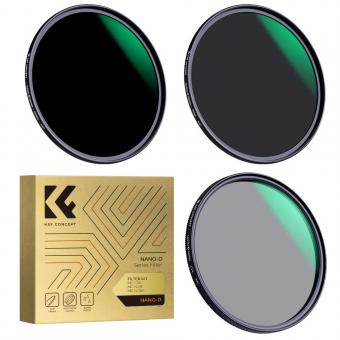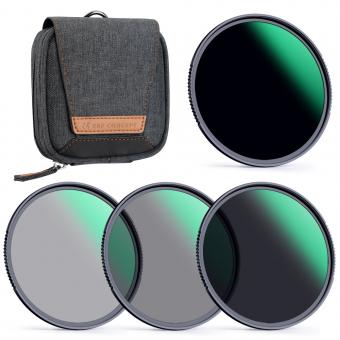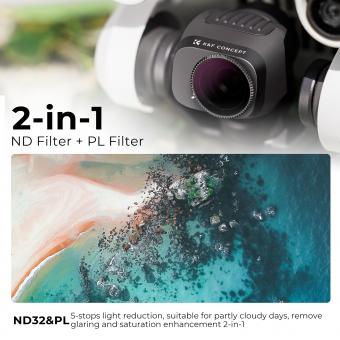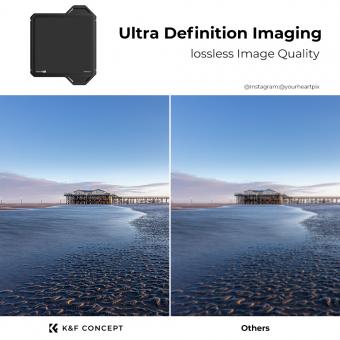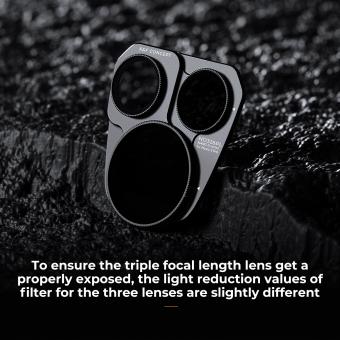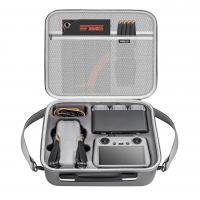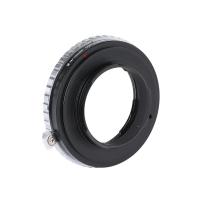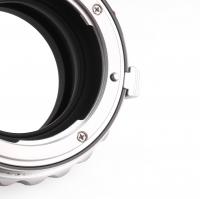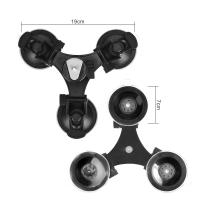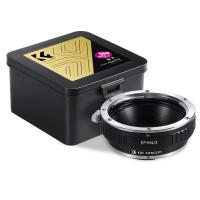Nd64 How Many Stops ?
ND64 filter reduces the amount of light entering the lens by 6 stops.
1、 - Definition of ND64 filter
ND64 filter is a type of neutral density filter that reduces the amount of light entering the camera by six stops. This means that it allows only 1/64th of the light to pass through the lens, making it ideal for shooting in bright daylight conditions. The ND64 filter is commonly used in landscape photography to achieve a slower shutter speed, which can create a sense of motion in waterfalls, rivers, and other moving subjects.
The ND64 filter is made of high-quality optical glass or resin and is available in different sizes to fit various lens diameters. It is an essential tool for photographers who want to control the amount of light entering their camera without changing the aperture or shutter speed settings. This filter is also useful for videographers who want to achieve a cinematic look by using a slower shutter speed.
In recent years, there has been a growing trend towards using higher density ND filters, such as ND1000 or ND2000, which reduce the amount of light entering the camera by 10 or 20 stops, respectively. These filters are particularly useful for long exposure photography, where a very slow shutter speed is required to capture the movement of clouds or stars.
In conclusion, the ND64 filter is an essential tool for photographers who want to control the amount of light entering their camera and achieve a slower shutter speed in bright daylight conditions. While higher density ND filters are becoming more popular, the ND64 filter remains a versatile and widely used option for landscape and outdoor photography.
2、 - How ND filters work
ND filters work by reducing the amount of light that enters the camera lens, allowing for longer exposure times without overexposing the image. This is particularly useful in bright outdoor settings where the available light can be too intense for the camera's sensor to capture detail in both the highlights and shadows.
ND filters are rated by the number of stops they reduce the light by. For example, an ND2 filter reduces the light by one stop, while an ND64 filter reduces the light by six stops. The higher the number, the darker the filter and the longer the exposure time required to achieve a properly exposed image.
The latest point of view on ND filters is that they are essential tools for photographers and videographers who want to achieve creative effects in their work. ND filters can be used to create motion blur in waterfalls or other moving subjects, to capture long exposures of starry skies, or to achieve shallow depth of field in bright sunlight.
ND filters are available in a range of strengths and sizes, and can be used with a variety of lenses and cameras. They are a versatile and valuable addition to any photographer's kit, and can help to elevate the quality and creativity of their work.
3、 - Stops of light reduction
"ND64 how many stops" refers to the amount of light reduction provided by a neutral density filter with a rating of ND64. The ND64 filter reduces the amount of light entering the camera by 6 stops, making it a popular choice for photographers who want to achieve long exposure shots in bright daylight conditions.
The ND64 filter is particularly useful for landscape photographers who want to capture the movement of water or clouds in their images. By reducing the amount of light entering the camera, the filter allows for longer exposure times without overexposing the image. This can create a beautiful, dreamy effect in the final image.
In addition to its use in landscape photography, the ND64 filter can also be used in other genres such as portrait and street photography. By using the filter to reduce the amount of light, photographers can use wider apertures to achieve a shallow depth of field, even in bright daylight conditions.
Overall, the ND64 filter is a versatile tool for photographers looking to control the amount of light entering their camera. It is a must-have accessory for any photographer who wants to experiment with long exposure photography or achieve creative effects in their images."
4、 - Applications of ND64 filter
ND64 filter is a type of neutral density filter that reduces the amount of light entering the camera by six stops. This filter is commonly used in bright daylight conditions to allow for longer exposure times without overexposing the image. The ND64 filter is particularly useful for landscape photography, where longer exposure times can create a sense of motion in water or clouds.
The applications of ND64 filter are numerous. One of the most common uses is for long exposure photography. By reducing the amount of light entering the camera, the ND64 filter allows for longer exposure times, which can create stunning effects such as silky smooth waterfalls or streaking clouds. The ND64 filter is also useful for portrait photography, where it can be used to create a shallow depth of field in bright sunlight.
Another application of the ND64 filter is for video production. By reducing the amount of light entering the camera, the ND64 filter allows for a wider aperture and slower shutter speed, which can create a cinematic look in video footage. The ND64 filter is also useful for drone photography, where it can help to reduce the shutter speed and create smoother footage.
In recent years, there has been a growing trend towards using higher density neutral density filters, such as the ND1000 or ND2000. These filters can reduce the amount of light entering the camera by 10 or 20 stops, respectively. While these filters are not as commonly used as the ND64, they can be useful in extremely bright conditions or for creating very long exposures.
Overall, the ND64 filter is a versatile tool for photographers and videographers, allowing for creative control over exposure in bright conditions.


